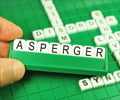Chinese- and English-speaking dyslexics have different neurological deficits, according to a study released Monday which suggests that dyslexia may be different brain disorders in the two cultures.
English speakers with the reading disability typically have functional abnormalities in posterior parts of the brain associated with reading and possibly less gray matter in these areas also.In Chinese dyslexics, on the other hand, the functional and structural brain abnormalities related to reading correspond with the left middle frontal region of the brain, according to new research.
The new research is based on brain scans performed on 16 dyslexic Chinese speakers and 16 of their peers with normal reading ability during the course of a couple of tests.
Researchers first asked the 32 Beijing primary school students to look at two Chinese characters in different size font to see if they could identify the difference in size.
Having used this question to establish which part of their brains was involved with reading, the investigators then presented the students with two more Chinese characters and asked them if the two characters rhymed.
The second question was designed to test the students' phonological awareness, their sensitivity to the sound structure of language, which is considered an important and reliable predictor of reading ability.
Advertisement
They also had less gray matter in this brain region than the children with normal reading skills.
Advertisement
While surprising, the contrast can be explained by the fact that the Chinese language uses characters, while English uses a letter alphabet, one of the researchers said.
"At the functional level, it's easy to understand why Chinese and English speakers use different parts of the brain to read language," said Li-Hai Tan, a professor of linguistics and neuroscience at the University of Hong Kong, and author on the paper.
"The different brain networks accommodate the different features of English and Chinese. The two systems are dramatically different. Chinese is pictographic and English is more phonological, or sound-based."
However, he said that it was striking that the Chinese dyslexic children had less gray matter in the middle frontal gyrus, and that was probably a function of genetics, since this phenomenon is thought to be largely genetic.
This would suggest that the genetic makeup of Chinese speaking dyslexics is different from that of English speakers with the same disorder since they have reductions of gray matter in different sites of the brain.
The study involved researchers from the University of Hong Kong, the Beijing Institute of Technology, and the University of Pittsburgh and appears in the Proceedings of the National Academy of Sciences.
Source-AFP
SRM/L








